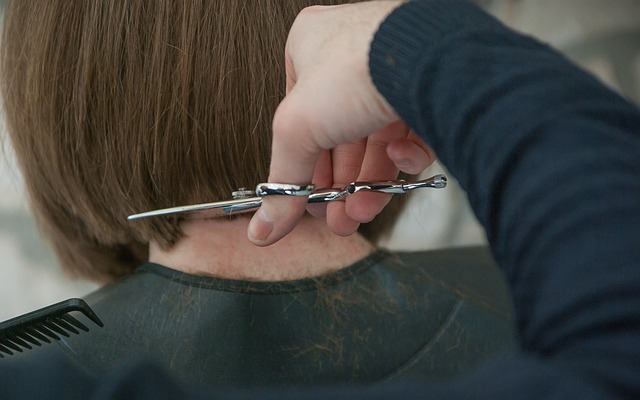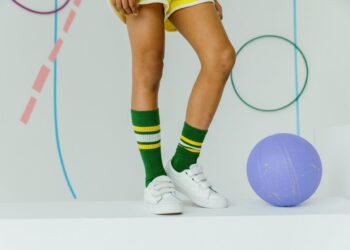Haircutting is an essential skill for both aspiring hairstylists and seasoned professionals. Mastering the art of haircutting involves understanding a variety of techniques, tools, and styles that cater to individual client needs.
This guide aims to provide insight into the fundamental tools required, such as shears, clippers, and combs, while also exploring various cutting techniques, including blunt cuts, layers, and texturizing. By equipping yourself with the right knowledge and skills, you can enhance your creativity and deliver stunning results that leave your clients feeling confident and satisfied.
Understanding Hair Types and Textures
Every client’s hair type and texture play a significant role in determining the best cutting techniques and styles to employ. Hair can generally be categorized into straight, wavy, curly, and coily types, each requiring different approaches to achieve the desired look. Straight hair often appears sleek and shiny, making it ideal for blunt cuts, while wavy hair can benefit from layering to enhance volume and movement. Curly hair requires special consideration; techniques such as the curly cut help maintain the natural bounce and definition of curls without sacrificing shape.
Understanding the texture of hair—whether fine, medium, or coarse—can influence cutting decisions. Fine hair may require thinning techniques to avoid looking flat, while coarse hair can often be handled with stronger, more defined cuts to manage its bulk. By assessing both the type and texture of each client’s hair, hairstylists can customize their approach to create looks that flatter and enhance individual beauty.
Essential Cutting Techniques
A variety of cutting techniques can dramatically alter the final appearance of a hairstyle. Blunt cutting is one of the most straightforward methods, providing a clean, sharp edge that works well for both straight and slightly wavy hair. This technique is particularly effective for creating styles that need precision and sharpness, such as bobs or lobs. Hairstylists can utilize this technique to establish a strong foundation for the haircut before integrating more intricate detailing.
On the other hand, layering is a technique that introduces movement and dimension to a hairstyle. By researching a how to use thinning shears picture guide or practicing on mannequin heads, hairstylists can learn to create layers of various lengths to achieve different effects. Longer layers add volume and texture to the hair, while shorter layers provide a more defined look. This technique is suitable for clients with straight, wavy, or slightly curly hair.
Tools of the Trade
The tools hairstylists use can significantly impact the outcome of their haircuts. High-quality shears are essential for precise cuts; they should be maintained regularly to ensure clean lines and minimize damage to the hair. Investing in various sizes of shears enables stylists to execute different techniques, from detailed snipping to larger sections of hair. Additionally, a good pair of thinning shears can help reduce bulk without compromising the length, providing a seamless finish.
Clippers are another indispensable tool, particularly for short hairstyles or fading techniques. Different attachments offer flexibility in cutting lengths, allowing for creative styling options such as undercuts or tapered looks. Furthermore, combs and brushes also play a vital role in the process, aiding in sectioning hair and ensuring even cuts. A well-equipped stylist who understands the function of each tool will be able to create a broader range of styles tailored to their client’s preferences.
The Importance of Consultation
A thorough consultation with clients is crucial before beginning any haircut. This step allows the stylist to understand the client’s lifestyle, preferences, and any concerns they may have regarding their hair. Open communication enables both parties to align on expectations, ensuring the stylist can tailor their approach to meet the client’s needs effectively. During consultations, it’s beneficial for stylists to ask open-ended questions about the desired outcome, previous experiences, and maintenance routines to foster a collaborative environment.
Showing clients photos of different styles can be incredibly helpful during consultations. Visual references facilitate discussion and help clarify what the client envisions. This process also provides an opportunity for stylists to educate clients on what styles are achievable based on their hair type, texture, and face shape. Ultimately, effective consultations are paramount in building trust and ensuring that clients leave the salon satisfied with their new look.
Maintaining Client Relationships
Building and maintaining relationships with clients is essential for a successful hairstyling career. Creating a welcoming and comfortable atmosphere in the salon encourages clients to return regularly, which can lead to a loyal customer base. Personal touches, such as remembering a client’s name, hair history, and preferences, can significantly enhance their experience. Regular follow-ups, whether through social media or a quick phone call, can remind clients they are valued and encourage them to book their next appointment.
Additionally, offering tips and guidance on at-home hair care can strengthen these relationships further. Providing recommendations on products or techniques to maintain their hairstyle can position you as a trusted expert, leading to increased client retention and referrals. By prioritizing client relationships, stylists can build a flourishing practice that thrives on repeat business and positive word-of-mouth.

Mastering the art of hair cutting requires not only technical skills and knowledge of tools and techniques but also an understanding of individual client needs and preferences. By familiarising themselves with different hair types, employing essential cutting techniques, and maintaining strong client relationships, hairstylists can elevate their craft and ensure client satisfaction. Continuous learning and open communication during consultations foster trust and creativity, making each haircut a collaborative masterpiece. Ultimately, investing in both the artistry of cutting and the connections with clients will lead to a rewarding and successful career in hairstyling.







